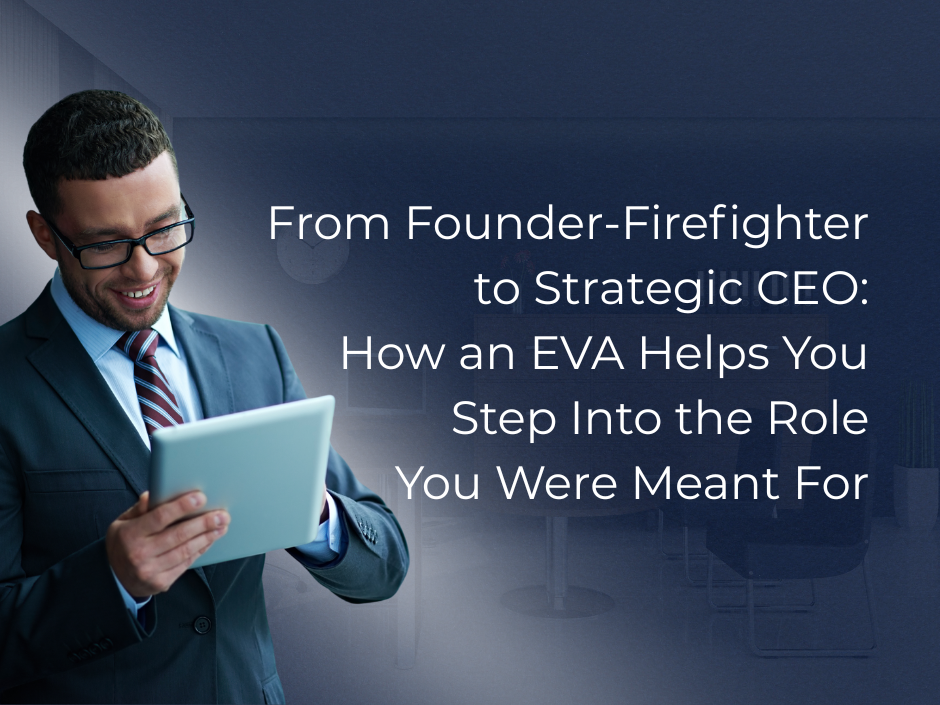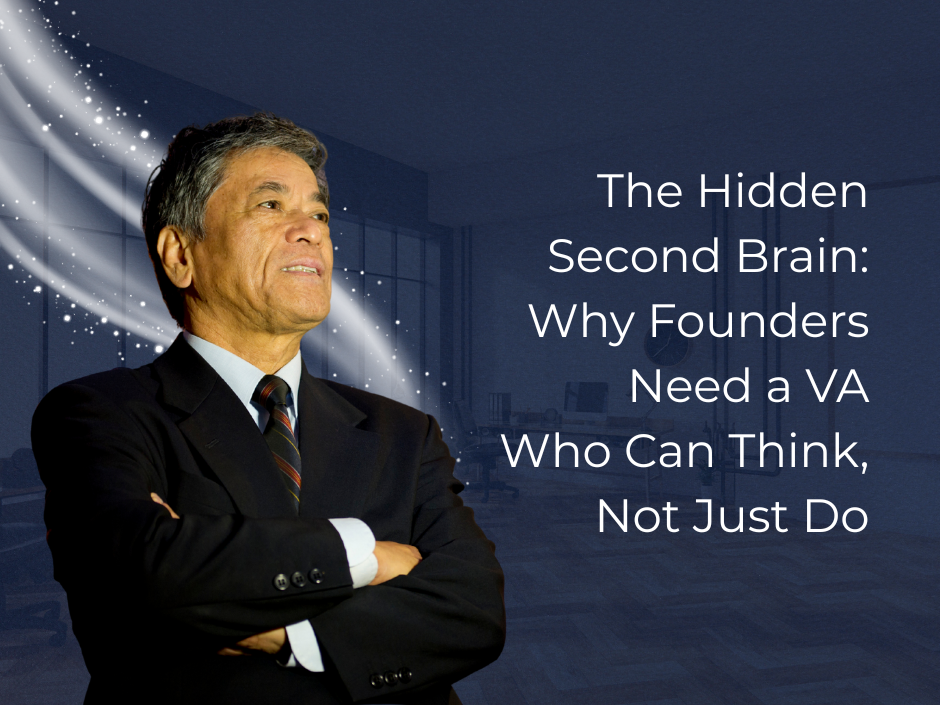- Andrea Isabel Blanco
- May 20
- 4 min read
Updated: Jul 9
Let’s be honest: your job title might say CEO, but your calendar probably says something else.
One day you’re troubleshooting a failed client payment. The next, you're chasing a vendor or updating a spreadsheet. And in between, you're still answering emails, approving designs, and pushing projects over the finish line.
This is what we call the founder-firefighter trap.
And it’s one of the biggest growth bottlenecks for early-stage companies.
You can’t scale if you’re stuck in the trenches.
At EVA Works, we’ve helped dozens of founders make the leap from reactive operator to strategic CEO—with the help of Executive Virtual Assistants (EVAs) who serve not just as admin support, but as extensions of the founder brain.
This article breaks down:
What keeps founders stuck in reactive mode
What the “strategic CEO” role actually looks like
How EVAs enable the shift
Systems to support the transition
The Founder-Firefighter Loop (And Why It Feels So Hard to Escape)
Let’s define it clearly:
Founder-Firefighter = A founder who spends their day putting out operational fires, answering questions, and making small, urgent decisions.
It’s common. It’s exhausting. And it’s a growth killer.
Here’s why it happens:
1. The business is still founder-led, not systems-led
Most early-stage startups run on founder knowledge: you know where things are, how to do them, what “done” looks like.
So everything funnels back to you.
2. Hiring support hasn’t created leverage
Maybe you’ve hired a VA or ops assistant—but they’re waiting on instructions or only good at basic execution.
You still have to tell them what to do and how to do it.
3. You mistake visibility for control
You’re afraid of stepping back because you don’t want to miss something. So you stay involved… and become the blocker.
And over time, you start to believe that being “in the weeds” is just part of the job.
But that’s not the job of a CEO.
What Strategic CEOs Actually Do
When we work with founders at EVA Works, we define the role of a strategic CEO with 5 key responsibilities:
1. Set the vision
Where are we going? Why now? What do we believe?
2. Allocate resources
People, capital, time—what gets prioritized?
3. Build the right team
Who do we need now, and who do we need next?
4. Protect the company’s momentum
Anticipate risks. Remove blockers. Keep forward motion.
5. Communicate and reinforce values
Internally and externally, the CEO shapes how the company shows up.
Notice what’s not on this list?
Responding to every email
Owning every client deliverable
Chasing invoices
Building dashboards
Scheduling meetings
Organizing files
Taking meeting notes
Updating Asana tasks
These are important tasks. But they’re not your tasks.
They belong to your team—and more specifically, to your EVA.
The EVA Difference: Strategic Enablement, Not Just Admin Help
At EVA Works, our Executive Virtual Assistants aren’t order-takers.They’re founder enablers.
Here’s how an EVA helps shift you into your CEO seat:
1. Information Gatekeeper
Your EVA filters the noise:
Only brings you decisions you actually need to make
Summarizes threads and priorities
Flags follow-ups you might miss
You get clarity, not chaos.
2. Time Strategist
Your EVA owns your calendar:
Sets deep work blocks and buffers
Screens meetings and handles scheduling
Makes sure your week aligns with your top goals
You stop reacting to time—you own it.
3. Project Shepherd
Your EVA moves projects forward without you chasing them:
Assigns tasks
Tracks progress
Circulates status updates
You spend less time checking and more time deciding.
4. Systems Builder
Your EVA captures how things get done:
Documents your preferences
Builds SOPs and templates
Helps onboard future hires
You don’t need to be the company’s brain anymore.
Shifting from Reactive to Strategic: A Timeline
Making this shift doesn’t happen overnight. But with the right support, founders start seeing a difference in as little as 30 days.
Week 1–2: Build the Foundation
Give your EVA full calendar and inbox access
Define your ideal day/week
Identify recurring tasks to offload first
Week 3–4: Systematize Delegation
Create task briefs and SOP templates
Start weekly check-ins and flow reviews
Begin calendar blocking for deep work
Week 5+: Operate Like a CEO
Let your EVA manage project logistics
Use dashboards instead of doing check-ins manually
Make decisions, not updates
This is the phase where founders go from doing everything to deciding what gets done.
From Control to Leverage: The Mindset Shift
Let’s talk about what might be holding you back—mentally.
“But I can do it faster myself.”
You might be able to… but at what cost?Delegating is an investment in time that compounds over months.
“I’m not sure I trust anyone else yet.”
Trust is built through process.A skilled EVA doesn’t just do what you say—they mirror how you think.
“I don’t have time to train someone.”
That’s what EVA Works is built for.We onboard your EVA with founder-first systems, and help you set them up to run from Day 1.
5 Tasks to Let Go of This Week
Want a small win? Start with these:
Approvals under $1,000Let your EVA make the call—or escalate only edge cases.
Inbox triageThey sort and summarize, you only see what matters.
Meeting follow-upsLet them send the recap, assign the tasks, and schedule the next steps.
Status checksYour EVA should gather updates and present them to you—stop chasing.
Vendor or tool setupYou explain the goal. Your EVA handles the sign-up and coordination.
These are small offloads—but they create space for the strategic work you’ve been deferring.
Final Thought
You didn’t start this company to become its busiest employee. You started it to build something only you could build.
But if you’re stuck in execution, approvals, and busywork, you’re not leading—you’re surviving.
A strategic CEO isn’t someone with a fancy title. It’s someone who’s created the space, support, and structure to operate at their highest level.
Your EVA doesn’t just take work off your plate.They clear the path for you to actually do your real job.
And that’s where growth lives.



